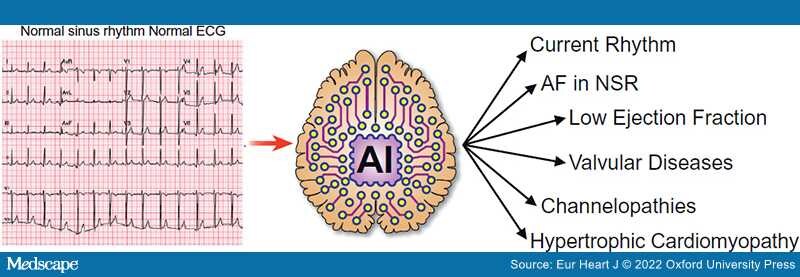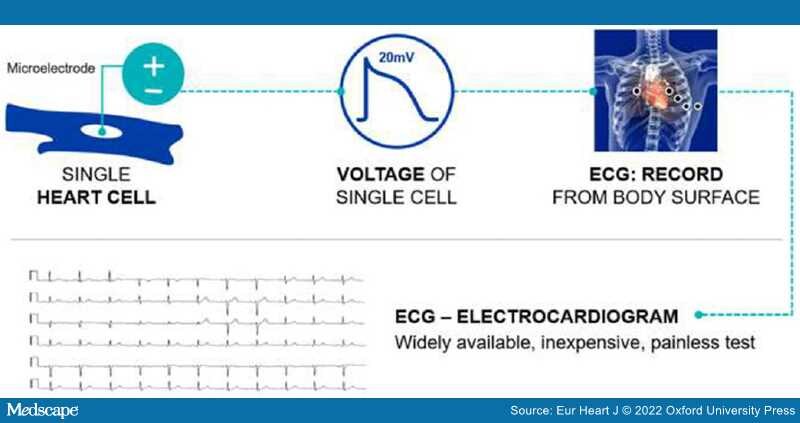| Model |
Author/Group |
Test geography hospital vs. development |
Prospective or retrospective |
Number of patients tested |
Disease prevalence (%) |
Description of controls |
Hardware specification (12 lead vs. other; specify manufactures/performance of 12 lead) |
Bias analysis: population reporting (age, sex, race, other) |
AUC |
Sensitivity (%) |
Specificity (%) |
| LVSD/HF |
Attia et al. 2
Mayo |
All Mayo Clinic Sites |
Retrospective |
52 870 |
7.8 |
Low EF confirmed by TTE |
12 Lead ECG (GE-Marquette) |
No formal analysis |
0.93 |
86.3 |
85.7 |
| LVSD/HF |
Attia et al. 18
Mayo |
All Mayo Clinic Sites |
Prospective |
3874 |
7.0 |
Low EF confirmed by TTE or HF prediction by NT-proBNP |
12 Lead ECG (GE-Marquette) |
No formal analysis |
0.918 |
82.5 |
86.8 |
| LVSD/HF |
Adedinsewo et al. 19
Mayo |
All Mayo Clinic Sites |
Retrospective |
1606 |
10.2 |
Low EF confirmed by TTE |
12 Lead ECG (GE-Marquette) |
Age, Sex |
0.89 |
73.8 |
87.3 |
| LVSD/HF |
Noseworthy et al. 20
Mayo |
All Mayo Clinic Sites |
Retrospective |
52 870 |
7.8 |
Low EF confirmed by TTE |
12 Lead ECG (GE-Marquette) |
Race |
>0.93 in all groups tested |
— |
— |
| LVSD/HF |
Attia et al. 21
Mayo |
Mayo Rochester |
Prospective |
100 |
7 |
Low EF confirmed by TTE |
AI-enhanced ECG-enabled stethoscope (Eko); single lead |
No formal analysis |
0.906 |
— |
— |
| LVSD/HF |
Attia et al. 22
Mayo/Multi-Institution |
Know Your Heart Sites
(Russia) |
Retrospective |
4277 |
0.6 |
Low EF confirmed by TTE |
12 Lead ECG (Cardiax; IMED Ltd, Hungary) |
Age, sex |
0.82 |
26.9 |
97.4 |
| LVSD/HF |
Cho et al. 23
Sejong/Korea |
Mediplex/Sejong (Korea) |
Retrospective |
IV-2908
EV-4176 |
6.8 |
Low EF confirmed by echo |
12 Lead ECG (Page Writer Cardiograph; Philips, Netherlands) |
Age, sex, obesity |
IV-0.913
EV-0.961 |
IV-90.5
EV-91.5 |
IV-75.6
EV-91.1 |
| LVSD/HF |
Cho et al. 23
Sejong/Korea |
Mediplex/Sejong (Korea) |
Retrospective |
IV-2908
EV-4176 |
6.8 |
Low EF confirmed by echo |
Single lead (LI) from 12 lead ECG (Page Writer Cardiograph; Philips, Netherlands) |
Performance of all single leads |
IV-0.874
EV-0.929 |
IV-93.2
EV-92.1 |
IV-63.2
EV-82.1 |
| LVSD/HF |
Kwon et al. 24
Sejong/Korea |
Mediplex/Sejong (Korea) |
Retrospective |
IV-3378
EV-5901 |
IV-9.7
EV-4.2 |
Low EF confirmed by echo |
12 Lead ECG (Page Writer Cardiograph; Philips, Netherlands) |
No formal analysis |
IV-0.843
EV-0.889 |
IV-n/a
EV-90 |
IV-n/a
EV-60.4 |
| HCM |
Ko et al. 13
Mayo |
All Mayo Clinic Sites |
Retrospective |
13 400 |
4.6 |
Sex/age matched |
12 Lead ECG (GE-Marquette) |
Age, sex, ECG finding |
0.96 |
87 |
90 |
| HCM |
Rahman et al. 25
Hopkins
Queens (CA) |
Hopkins
Baltimore |
Retrospective |
762 |
29.0 |
Patients with ICD and CM diagnosis |
12 Lead ECG (unspecified) |
No formal analysis |
RF-0.94
SVM-0.94 |
RF-87
SVM-0.91 |
RF-92
SVF-0.91 |
| Hyperkalaemia |
Galloway et al. 26
Mayo |
All Mayo Clinic Sites |
Retrospective |
MN-50 099
AZ-5855
FL-6011 |
MN-2.6
AZ-4.6
FL-4.8 |
Confirmation by serum potassium |
12 Lead ECG (GE-Marquette); 2 Lead evaluation LI/LII |
No formal analysis |
MN-0.883
AZ-0.853
FL-0.860 |
MN-90.2
AZ-88.9
FL-91.3 |
MN-54.7
AZ-55.0
FL-54.7 |
| Sex and age >40 years |
Attia et al. 1
Mayo |
All Mayo Clinic Sites |
Retrospective |
275 056 |
n/a |
Confirmed age/sex in medical record |
12 Lead ECG (GE-Marquette) |
Co-morbidity impact on ECG age |
Sex-0.968
Age-0.94 |
Sex-n/a
Age-87.8 |
Sex-n/a
Age-86.8 |
| Afib |
Attia et al. 3
Mayo |
All Mayo Clinic Sites |
Retrospective |
36 280 |
8.4 |
Patients without Afib on prior EKG |
12 Lead ECG (GE-Marquette) |
Analysis with 'window of interest' |
0.87 |
79.0 |
79.5 |
| Afib |
Tison et al. 27
UCSF |
Remote study; UCSF |
Prospective |
9750 |
3.4 |
12 lead EKG diagnosis of Afib |
Apple Watch photoplethysmography (Apple Inc.) |
No formal analysis |
0.97 |
98.0 |
90.2 |
| Afib |
Hill et al. 28
UK-Multi-institution |
UK |
Retrospective |
2 994 837 |
3.2 |
CHARGE-AF score |
Time-varying neural network; based on clinic data and risk scores |
No formal analysis |
0.827 |
75.0 |
74.9 |
| Afib |
Jo et al. 29
Sejong/Korea |
Multiple sites (Korea) |
Retrospective |
IV-6287
EV-38 018 |
IV-13
EV-6.0 |
Patients without afib |
12 lead, 6 lead, and single lead ECG (unspecified) |
No formal analysis |
IV/EV for 12,6, single lead all >0.95 |
All >98% |
All >99% |
| Afib |
Poh et al. 30
Boston |
Hong Kong |
Retrospective |
1013 |
2.8 |
Patients without afib |
Photoplethysmographic pulse waveform |
No formal analysis |
0.997 |
97.6 |
96.5 |
| Afib |
Raghunath et al. 31 |
Geisinger Clinic, PA, USA |
Retrospective |
1.6M |
|
Patients without afib |
12 lead ECG |
Age, sex, race analysed |
0.85 |
69 |
81 |
| Long QT (>500 ms) |
Giudicessi et al. 32
Mayo |
Mayo Clinic Rochester |
Both; prospective data reported |
686 |
3.6 |
QT expert/lab over-read of 12 lead ECGs |
6 lead smartphone-enabled ECG (AliveCor Kardia Mobile 6L) |
No formal analysis |
0.97 |
80.0 |
94.4 |
| Long QT |
Bos et al. 33
Mayo |
Mayo Clinic Rochester |
Retrospective |
2059 |
47 |
Patients without LQTS |
12 Lead ECG (GE-Marquette) |
LQTS genotype subgroup analysis |
0.900 |
83.7 |
80.6 |
| Multiple Pathologies |
Tison et al. 34
UCSF |
UCSF |
Retrospective |
36 816 (ECGs) |
HCM-27.4
PAH-29.8
Amyloid-28.3
MVP-21.0 |
Individual pathologies determined by standard care (i.e. echo, biopsy) |
12 Lead ECG (GE-Marquette) |
No formal analysis |
HCM-0.91
PAH-0.94
Amyloid-0.86
MVP-0.77 |
— |
— |
| Mod-Sev AS |
Cohen-Shelly et al. 6
Mayo |
All Mayo Clinic Sites |
Retrospective |
102 926 |
3.7 |
Mod-Sev AS confirmed by TTE |
12 Lead ECG (GE-Marquette) |
Age, sex |
0.85 |
78 |
74 |
| Significant AS |
Kwon et al. 7
Sejong/Korea |
Mediplex/Sejong (Korea) |
Retrospective |
IV-6453
EV-10 865 |
IV-3.8
EV-1.7 |
Significant AS confirmed by echo |
12 Lead ECG (Unspecified) |
No formal analysis |
IV-0.884
EV-0.861 |
IV-80.0
EV-80.0 |
IV-81.4
EV-78.3 |
| Significant AS |
Kwon et al. 7
Sejong/Korea |
Mediplex/Sejong (Korea) |
Retrospective |
IV-6453
EV-10 865 |
IV-3.8
EV-1.7 |
Significant AS confirmed by echo |
Single lead (L2) from 12 lead ECG (unspecified) |
No formal analysis |
IV-0.845
EV-0.821 |
— |
— |
| Mod-Sev MR |
Kwon et al. 35
Sejong/Korea |
Mediplex/Sejong (Korea) |
Retrospective |
IV-3174
EV-10 865 |
IV-n/a
EV-3.9 |
Mod-Sev MR confirmed by echo |
12 Lead ECG (Unspecified) |
No formal analysis |
IV 0.816
EV 0.877 |
IV 0.900
EV 0.901 |
IV 0.533
EV 0.699 |
| Mod-Sev MR |
Kwon et al. 35
Sejong/Korea |
Mediplex/Sejong (Korea) |
Retrospective |
IV-3174
EV-10 865 |
IV-n/a
EV 3.9 |
Mod-Sev MR confirmed by echo |
Single lead (aVR) from 12 lead ECG (unspecified) |
No formal analysis |
IV 0.758
EV 0.850 |
IV 0.900
EV 0.901 |
IV 0.408
EV 0.560 |











